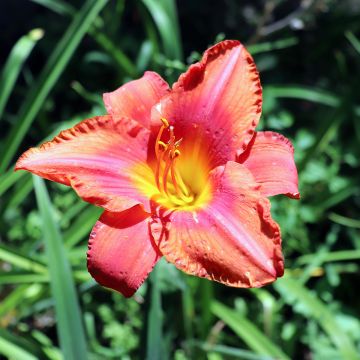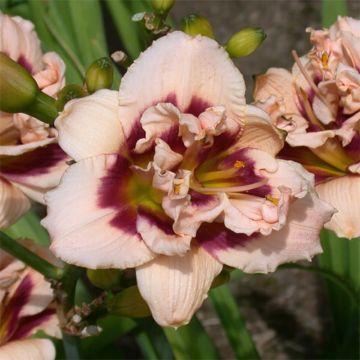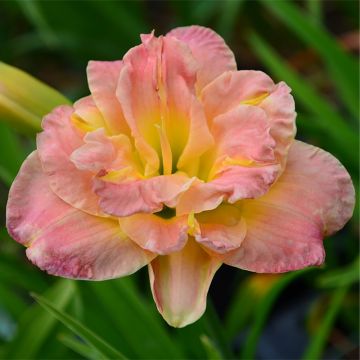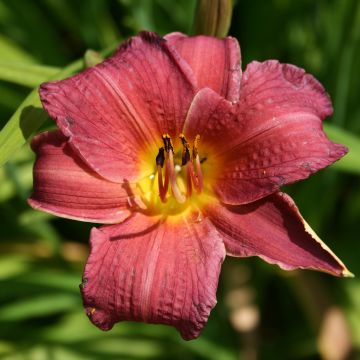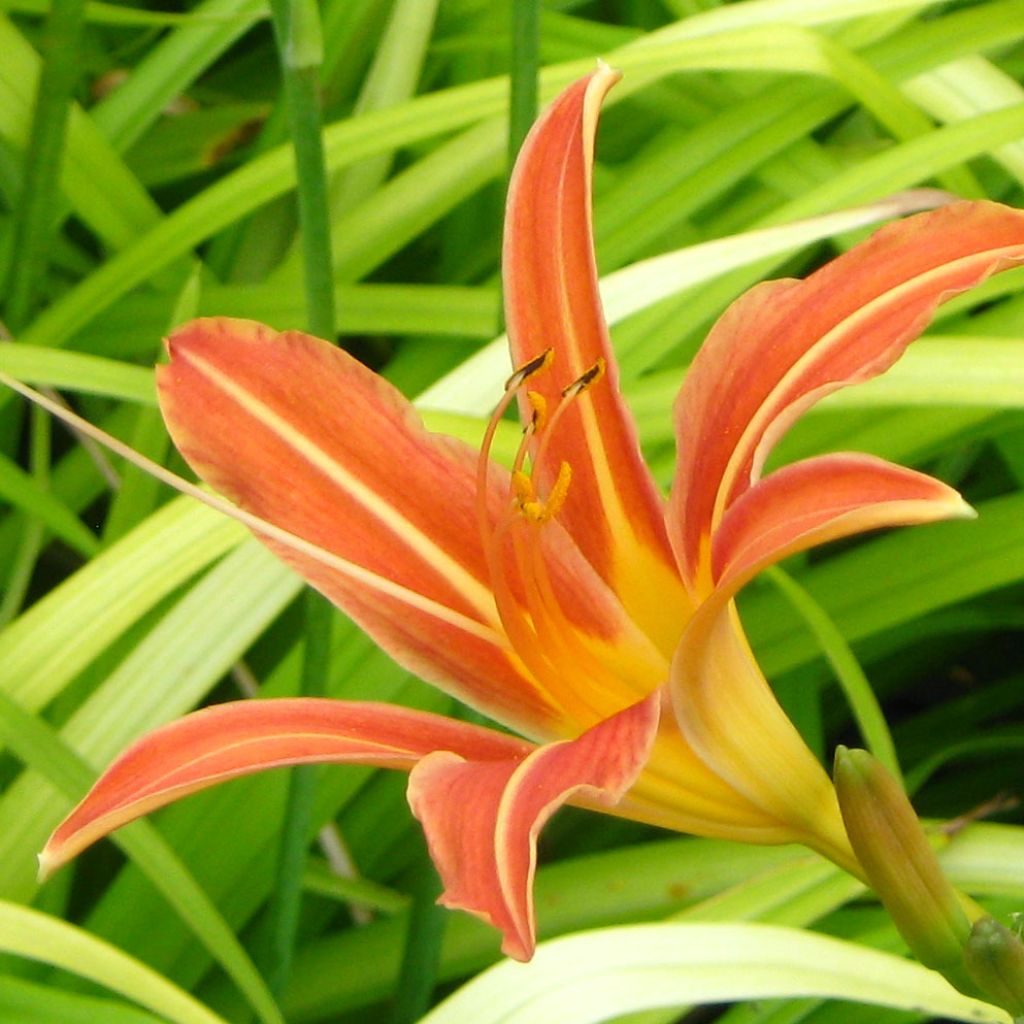

Hemerocallis Margaret Perry - Daylily


Hemerocallis Margaret Perry - Daylily


Hemerocallis Margaret Perry - Daylily
Hemerocallis Margaret Perry - Daylily
Hemerocallis Margaret Perry
Daylily
No text to translate.
Walburga, 13/11/2024
This item cannot be shipped to the selected country
Delivery charge from €5.90
Delivery to Corse prohibited
More information
Schedule delivery date,
and select date in basket
This plant carries a 12 months recovery warranty
More information
We guarantee the quality of our plants for a full growing cycle, and will replace at our expense any plant that fails to recover under normal climatic and planting conditions.
From €5.90 for pickup delivery and €6.90 for home delivery
Express home delivery from €8.90.
Delivery to Corse prohibited: UE law prohibits the import of this plant from mainland France to Corse as part of the fight against Xylella fastidiosa. Please accept our sincere apologies.
More information

Does this plant fit my garden?
Set up your Plantfit profile →
Description
The Daylily or Hemerocallis 'Margaret Perry' is an old, perpetual variety with exemplary vigour, forming beautiful, natural-looking flower clusters throughout the summer. Its elegant 'spider' flowers are composed of narrow petals, a deep melon orange with hints of red, and are adorned with bright yellow median lines that dive into the golden yellow throat. Graceful yet robust, it is a trouble-free perennial that will adapt to any garden in the UK.
The genus Hemerocallis belongs to the Liliaceae family. They are hardy perennial plants with deciduous, sometimes semi-evergreen foliage. The 'Margaret Perry' variety dates back to 1925 and has not lost its elegance and vivacity. It grows into a quite opulent clump, reaching 75 to 90 cm (30 to 35in), with a relative spread of 80 cm (32in). Hemerocallis tend to spread a little when they like the soil. The spider-like flowers measure 8 to 12 cm (3 to 5in) in diameter, and their unique appearance is called 'spider' in horticultural language. The petals in this variety are narrow and elongated, with pointed tips. A yellow line runs through each petal, from the tip to the throat of the flower. Each flower lasts only a day, but the flowering is continuously renewed over a beautiful period between June and July-August. The stems are sturdy and filled with numerous buds. The foliage is elegant and abundant, with linear and deciduous shapes. Hemerocallis are plants with short rhizomes and fleshy roots that tolerate drought but are more floriferous and opulent in moist soil.
These plants are easy to grow and thrive in shade and sun. Some are invasive, so do not hesitate to divide the clumps every four or five years, preferably in autumn, after flowering. The Hemerocallis is often called "the perfect perennial plant" because of its vibrant colours and its ability to tolerate any type of environment, but also due to its lack of modesty, as it is beautifully exuberant and goes well with other perennials. Plant them in generous clumps in the background of your flower beds. All summer bulb flowers can be planted alongside Hemerocallis. 'Margaret Perry' will fit perfectly into the setting of a contemporary or wild garden, with grasses, dwarf bamboo, Nandina or perennial flax by its side. Large pots with a minimum depth of 30 cm (12in) should be used on a balcony or patio, and dwarf varieties should be chosen. The flowers are edible: they brighten up salads and decorate desserts.
Report an error about the product description
Hemerocallis Margaret Perry - Daylily in pictures






Flowering
Foliage
Plant habit
Botanical data
Hemerocallis
Margaret Perry
Hemerocallidaceae (Liliaceae)
Daylily
Cultivar or hybrid
Other Hemerocallis - Daylilies
Planting and care
Plant your Hemerocallis 'Margaret Perry' in well-draining garden soil that is not too clayey and enriched with humus and compost. This will allow your perennial to withstand summer droughts and winter frosts. This variety is easy to grow and not susceptible to pests or diseases, so no treatment is required, and rodents are not attracted to it. Daylilies can grow both in partial shade and full sun, with 4 to 5 hours of daily sunlight sufficient—plant by burying the base 3 to 4 cm (1 to 2in) below the surface. If planting multiple plants, ensure enough space between them, as the spaces will quickly fill up. For a few weeks after planting, ensure the soil is moderately moist, but do not overwater. It is advisable to divide the plants, preferably in autumn after flowering.
Planting period
Intended location
Care
-
, onOrder confirmed
Reply from on Promesse de fleurs
Summer flowering perennials
Haven't found what you were looking for?
Hardiness is the lowest winter temperature a plant can endure without suffering serious damage or even dying. However, hardiness is affected by location (a sheltered area, such as a patio), protection (winter cover) and soil type (hardiness is improved by well-drained soil).

Photo Sharing Terms & Conditions
In order to encourage gardeners to interact and share their experiences, Promesse de fleurs offers various media enabling content to be uploaded onto its Site - in particular via the ‘Photo sharing’ module.
The User agrees to refrain from:
- Posting any content that is illegal, prejudicial, insulting, racist, inciteful to hatred, revisionist, contrary to public decency, that infringes on privacy or on the privacy rights of third parties, in particular the publicity rights of persons and goods, intellectual property rights, or the right to privacy.
- Submitting content on behalf of a third party;
- Impersonate the identity of a third party and/or publish any personal information about a third party;
In general, the User undertakes to refrain from any unethical behaviour.
All Content (in particular text, comments, files, images, photos, videos, creative works, etc.), which may be subject to property or intellectual property rights, image or other private rights, shall remain the property of the User, subject to the limited rights granted by the terms of the licence granted by Promesse de fleurs as stated below. Users are at liberty to publish or not to publish such Content on the Site, notably via the ‘Photo Sharing’ facility, and accept that this Content shall be made public and freely accessible, notably on the Internet.
Users further acknowledge, undertake to have ,and guarantee that they hold all necessary rights and permissions to publish such material on the Site, in particular with regard to the legislation in force pertaining to any privacy, property, intellectual property, image, or contractual rights, or rights of any other nature. By publishing such Content on the Site, Users acknowledge accepting full liability as publishers of the Content within the meaning of the law, and grant Promesse de fleurs, free of charge, an inclusive, worldwide licence for the said Content for the entire duration of its publication, including all reproduction, representation, up/downloading, displaying, performing, transmission, and storage rights.
Users also grant permission for their name to be linked to the Content and accept that this link may not always be made available.
By engaging in posting material, Users consent to their Content becoming automatically accessible on the Internet, in particular on other sites and/or blogs and/or web pages of the Promesse de fleurs site, including in particular social pages and the Promesse de fleurs catalogue.
Users may secure the removal of entrusted content free of charge by issuing a simple request via our contact form.
The flowering period indicated on our website applies to countries and regions located in USDA zone 8 (France, the United Kingdom, Ireland, the Netherlands, etc.)
It will vary according to where you live:
- In zones 9 to 10 (Italy, Spain, Greece, etc.), flowering will occur about 2 to 4 weeks earlier.
- In zones 6 to 7 (Germany, Poland, Slovenia, and lower mountainous regions), flowering will be delayed by 2 to 3 weeks.
- In zone 5 (Central Europe, Scandinavia), blooming will be delayed by 3 to 5 weeks.
In temperate climates, pruning of spring-flowering shrubs (forsythia, spireas, etc.) should be done just after flowering.
Pruning of summer-flowering shrubs (Indian Lilac, Perovskia, etc.) can be done in winter or spring.
In cold regions as well as with frost-sensitive plants, avoid pruning too early when severe frosts may still occur.
The planting period indicated on our website applies to countries and regions located in USDA zone 8 (France, United Kingdom, Ireland, Netherlands).
It will vary according to where you live:
- In Mediterranean zones (Marseille, Madrid, Milan, etc.), autumn and winter are the best planting periods.
- In continental zones (Strasbourg, Munich, Vienna, etc.), delay planting by 2 to 3 weeks in spring and bring it forward by 2 to 4 weeks in autumn.
- In mountainous regions (the Alps, Pyrenees, Carpathians, etc.), it is best to plant in late spring (May-June) or late summer (August-September).
The harvesting period indicated on our website applies to countries and regions in USDA zone 8 (France, England, Ireland, the Netherlands).
In colder areas (Scandinavia, Poland, Austria...) fruit and vegetable harvests are likely to be delayed by 3-4 weeks.
In warmer areas (Italy, Spain, Greece, etc.), harvesting will probably take place earlier, depending on weather conditions.
The sowing periods indicated on our website apply to countries and regions within USDA Zone 8 (France, UK, Ireland, Netherlands).
In colder areas (Scandinavia, Poland, Austria...), delay any outdoor sowing by 3-4 weeks, or sow under glass.
In warmer climes (Italy, Spain, Greece, etc.), bring outdoor sowing forward by a few weeks.


































